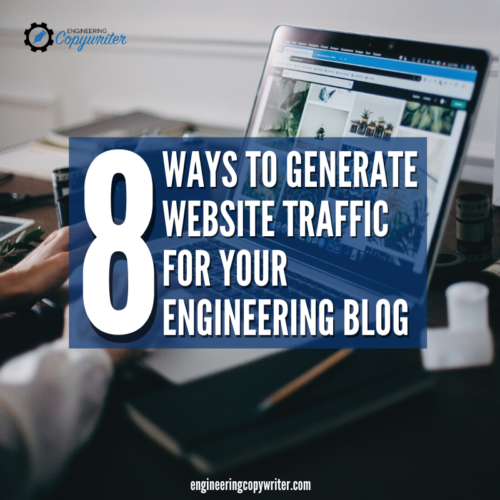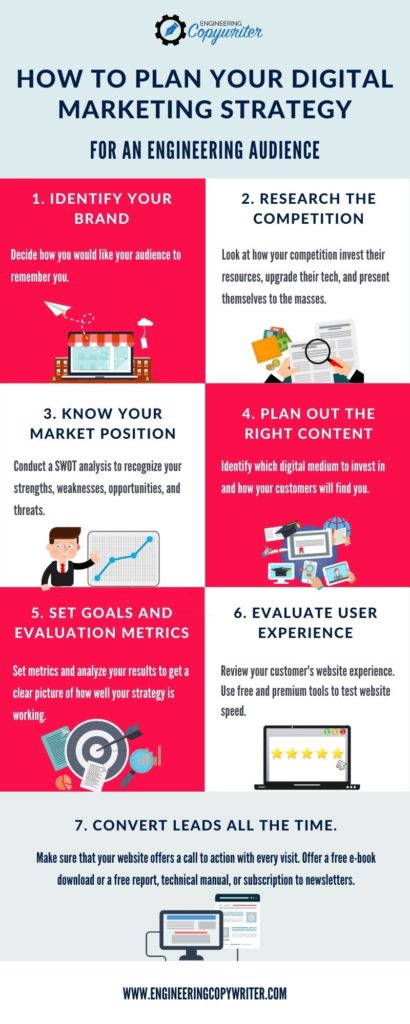5. Develop a wide range of content for your audience
 Another natural way to generate more traffic is to create a wide variety of content for your audience. This can include long-form content, question-based blog posts, infographics, instructional resources, webinars, videos, and tutorials. You’ll also probably experience a boost in traffic if you create courses, certifications, or instructional pieces that are useful to your audience.
Another natural way to generate more traffic is to create a wide variety of content for your audience. This can include long-form content, question-based blog posts, infographics, instructional resources, webinars, videos, and tutorials. You’ll also probably experience a boost in traffic if you create courses, certifications, or instructional pieces that are useful to your audience.
Long-form content typically contains 1,000-7,500 words and explains, in detail, complex engineering topics. They serve as pillar articles and can help increase the number of time viewers spend on your website. Plus, they’re spaces for you to establish your brand and demonstrate thought leadership.
Question-based blog posts are beneficial for website traffic since they allow you to address long-tail keywords. You can boost your search engine ranking by talking about topics that engineering customers want to discuss.
Choose your subject matter based on the interests of your readers and the customers you want to attract. You can look at your google analytics to see which articles perform well and which don’t.
6. Blog on a regular basis
Search engines notice how often you publish new engineering content, so your posting schedule affects your search rankings. In addition to fresh content, you can also regularly update old blog posts. Add updated data and fresh info at least once a year. Instead of busting your tail to write 3-4 blog posts a week, you can focus on creating at least 1 high-quality article per week.
Take into account that when indexing websites, search engines such as Google hunt for new information. If you fail to update your webpage on a consistent schedule, you risk being ranked lower than those that do.
7. Posting content through social networking platforms
If you want to drive more traffic to your website, leave comments on other people’s social media postings and share your blog pieces in response to their inquiries. This is a great way to showcase your articles to engineering readers while also allowing you to network with other industrial marketers.
Additionally, you can encourage readers to drop comments on your own social media platforms and at the bottom of posts. This strategy can help generate more keywords, encourage return visits, and increase post engagement in general.
Posting on social media also helps drive traffic to your website. But it’s not enough to simply publish stuff on social media; you must also be actively involved in the network. Respond to questions and interact with your audience. Nothing turns people off faster than utilizing social media as a one-way broadcast channel. Instead, use it as it was designed and communicate with your followers.
Establish trust by being supportive on social media networks and distributing your engineering content in a variety of ways. It will all help you grow your readership and reach people you would not have reached otherwise.
8. Advertisement
Paid search, social media advertising, and display advertising are all great strategies to get eyes on your website, grow your brand, and attract visitors. Getting people to notice you can be hard, especially if you are still a growing engineering firm. Attract attention by creating click-worthy ads with catchy headings and captions. Make use of videos to further captivate your audience.
Introduce modifications to your paid strategies to meet your objectives. Once a month, examine how your ads are doing and focus on those that bring you traffic. Every paid channel has advantages and disadvantages, so consider your goals carefully.
An engineering blog that generates website traffic
The higher the quality of your online engineering content, the better your site will perform in terms of traffic. You can use blog planners to create engineering content that is relevant to your target audience’s interests. Your material will be more visible in search results if you use SEO. Digital media content helps you raise brand recognition and drives traffic to your website. Contact us today if you need help with your engineering content.





 Implementing search engine optimization, or SEO is one of the best ways to generate website traffic to an engineering blog. This means making sure your
Implementing search engine optimization, or SEO is one of the best ways to generate website traffic to an engineering blog. This means making sure your  Another natural way to generate more traffic is to create a wide variety of content for your audience. This can include long-form content, question-based blog posts, infographics, instructional resources, webinars, videos, and tutorials. You’ll also probably experience a boost in traffic if you create courses, certifications, or instructional pieces that are useful to your audience.
Another natural way to generate more traffic is to create a wide variety of content for your audience. This can include long-form content, question-based blog posts, infographics, instructional resources, webinars, videos, and tutorials. You’ll also probably experience a boost in traffic if you create courses, certifications, or instructional pieces that are useful to your audience.
